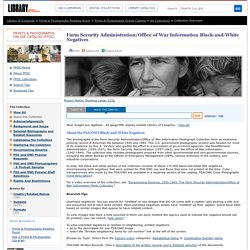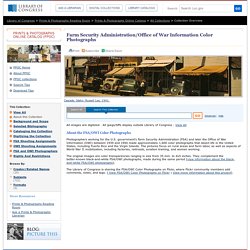

History Matters: The U.S. Survey Course on the Web. To Kill a Mockingbird. Introduction This guide is written for teachers and students who are studying Harper Lee's novel To Kill a Mockingbird.

The guide is written specifically for students in the UK, but I hope it may be helpful to users from other parts of the world. To Kill a Mockingbird is a set text for GCSE exams in English literature. It may also be studied for teacher-assessed coursework in English in Key Stages 3 and 4 (GCSE reading). To Kill A Mockingbird. Great Depression Pictures. S 100 YEARS...100 HEROES & VILLAINS. Primitive Baptist FAQ. Frequently Asked QuestionsAbout the Practices ofPrimitive Baptists(Revised 07/16/97) Because the Primitive Baptists are relatively few in number when compared to the popular denominations, and because some ways of Primitive Baptists are considered peculiar by most of the world, there are a great number of questions asked about them.

Unfortunately, a great number of inaccurate answers are given. We have supplied this FAQ to satisfy the curious, and to correct erroneous speculations. Though Primitive Baptist churches are independently governed, there is a high degree of homogeneity among them; therefore, this FAQ should represent most, but we do not claim to speak in behalf of all. Question: Why the name Primitive Baptist? Primitive Baptist ancestors have been called by various names over the ages. Primitive also conveys the idea of simplicity. Question: What is the difference between Primitive Baptists and other Baptists? Question: What is the Primitive Baptist view of the scriptures? To Kill a Mockingbird. We Shall Overcome; Historic Places of the Civil Rights Movement National Register Travel Itinerary.
Southern Literary Trail - Celebrating Writers of Classic Southern Literature. The Farm Security Administration. Most images are digitized | All jpegs/tiffs display outside Library of Congress | View All The photographs in the Farm Security Administration/Office of War Information Photograph Collection form an extensive pictorial record of American life between 1935 and 1944.

This U.S. government photography project was headed for most of its existence by Roy E. Stryker, who guided the effort in a succession of government agencies: the Resettlement Administration (1935-1937), the Farm Security Administration (1937-1942), and the Office of War Information (1942-1944). The collection also includes photographs acquired from other governmental and non-governmental sources, including the News Bureau at the Offices of Emergency Management (OEM), various branches of the military, and industrial corporations. For a video overview of the collection, see "Documenting America, 1935-1943: The Farm Security Administration/Office of War Information Photo Collection. " Research Tips. Documenting America. All images are digitized | All jpegs/tiffs display outside Library of Congress | View All Photographers working for the U.S. government's Farm Security Administration (FSA) and later the Office of War Information (OWI) between 1939 and 1944 made approximately 1,600 color photographs that depict life in the United States, including Puerto Rico and the Virgin Islands.

The pictures focus on rural areas and farm labor, as well as aspects of World War II mobilization, including factories, railroads, aviation training, and women working. The original images are color transparencies ranging in size from 35 mm. to 4x5 inches. They complement the better-known black-and-white FSA/OWI photographs, made during the same period [view information about the black-and-white FSA/OWI photographs].